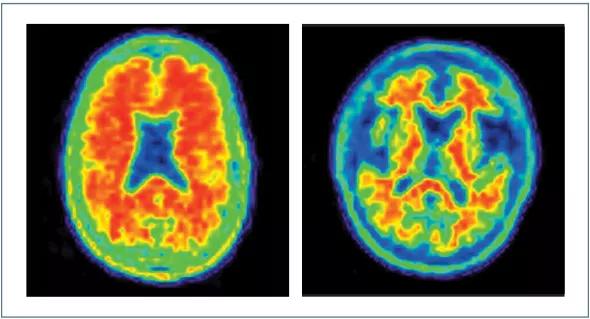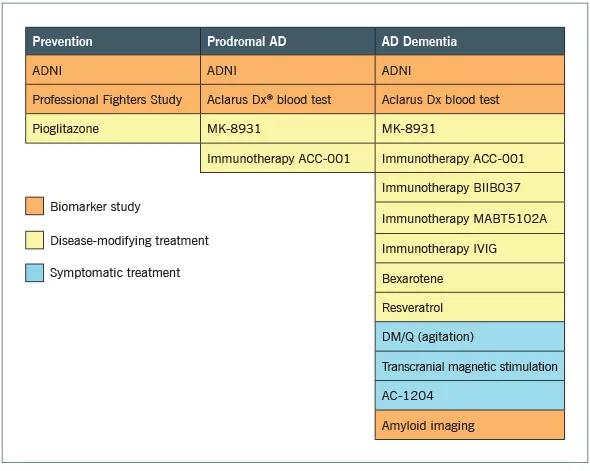Clinical trials program combats an elusive disease on all fronts

By Jeffrey Cummings, MD, ScD, and Kate Zhong, MD
Cleveland Clinic is a non-profit academic medical center. Advertising on our site helps support our mission. We do not endorse non-Cleveland Clinic products or services. Policy
The challenge posed by Alzheimer disease (AD) is stark: If no means of preventing or delaying AD is identified, the number of Americans suffering from the disease is projected to rise from 5.3 million today to more than 13 million by 2050.
Current treatments for AD, which include cholinesterase inhibitors and memantine, offer temporary symptomatic benefit. They improve cognition, function and behavior in some patients and delay disease progression in most. They do not modify the underlying disease process.
There is an urgent need to identify disease-modifying therapies that will prevent AD, delay its onset or slow its progression. In addition, new agents are needed to further improve AD’s symptomatic manifestations.
More than 80 agents are currently in clinical trials for the treatment of some phase of AD, including novel disease-modifying and symptomatic treatments. Cleveland Clinic Lou Ruvo Center for Brain Health (LRCBH) has one of the largest U.S. clinical trials programs for AD therapeutics. Our innovative multisite organization, detailed below, helps develop strategies to transform the clinical trials process, improve the quality of trials and develop new therapies for AD.
The molecular neurobiology of AD is increasingly well understood. Amyloid protein abnormalities in the brain are among the first identifiable biological changes in the disease and are manifested by a reduction in beta amyloid levels in the CSF and deposition of amyloid in the brain on amyloid imaging (Figure 1).

Figure 1. Amyloid imaging scans show contrasting findings in a patient with Alzheimer-type dementia with heavy amyloid deposition (left) vs. a healthy control subject of similar age (right).
Cell death increases as AD progresses, with liberation of tau protein into the spinal fluid and exposure of intercellular neurofibrillary tangles to the CSF, leading to increases in CSF tau and hyperphosphorylated tau (p-tau). Neurodegeneration also leads to increasing atrophy on MRI. Cerebral metabolism is compromised, as demonstrated by reduced cerebral metabolic activity on FDG-PET studies. There are biomarkers for the major milestones of AD.
Approximately 95 percent of drugs addressing CNS diseases fail, and disease-modifying interventions have proved particularly difficult to develop. To advance therapies, it is important to have what we term a “multiple shots on goal” strategy, since only a very few test agents become successful drugs.
With this in mind, the LRCBH has developed a balanced matrix type of clinical trials program, with agents targeting multiple disease stages in a variety of formulations and with diverse mechanisms of action (Figure 2).

Figure 2. Balanced matrix of therapeutics and diagnostics being assessed in the LRCBH clinical trials program. Agents/studies are grouped according to whether they represent prevention approaches in patients with normal cognition, drugs addressing mild cognitive symptoms in patients with prodromal AD, or drugs for more severe behavioral and cognitive symptoms in patients with Alzheimer dementia. ADNI = Alzheimer’s Disease Neuroimaging Initiative; DM/Q = dextromethorphan/quinidine.
Multiple treatment options are being assessed to match patients’ needs and preferences, from immunotherapies given by intravenous or subcutaneous injection to oral medications to device-based therapies such as transcranial magnetic stimulation. Dextromethorphan/quinidine (Nuedexta™) is being investigated for its potential impact on agitation, while other interventions are being assessed for cognitive and functional outcomes. Anti-amyloid disease-modifying therapies, non-amyloid targeted disease-modifying therapies and symptomatic interventions are all being assessed by the LRCBH clinical trials program (Figure 3).

Figure 3. Organization of the LRCBH clinical trials program according to the mechanism of action targeted.
The FDA’s requirement that new therapies have their efficacy demonstrated by randomized, placebo-controlled trials is well established. One of its underappreciated implications is that patients must be engaged in the drug development process in order for it to succeed. Patients are thus empowered to contribute in an essential way to the development of therapies for the diseases that afflict them. This motivation is bolstered when affected individuals realize that their children and grandchildren may well be at increased risk for AD unless new therapies are found.
The scope of the LRCBH’s clinical trials program signals our commitment to offering AD patients broad opportunities for such empowerment. One of the ways we do so is through a network of trial sites with extensive national reach. The LRCBH has locations at Cleveland Clinic facilities in:
These sites form a unique AD clinical trials consortium that matches patient location with available studies. The consortium amplifies our ability to engage multiple patients in clinical trials and accelerate therapeutic testing, and it promises to improve trial quality and efficacy.
A leading goal of the LRCBH clinical trials program is to transform trials by identifying methodologies that improve quality and accelerate drug development. Recent LRCBH publications address important issues that impact drug development for AD:
As AD prevalence continues to rise, new therapies are urgently needed — along with innovative approaches to fuel their development. We hope the LRCBH innovations reviewed here — a balanced matrix approach to clinical trials, a distributed network of trial sites that takes advantage of Cleveland Clinic’s wide-ranging geography, and efforts to engage patients as empowered citizen-scientists fighting diseases that afflict them — may help yield an elusive breakthrough.
Dr. Cummings is Director of Cleveland Clinic Lou Ruvo Center for Brain Health. Dr. Zhong is Senior Director for Research at Cleveland Clinic Lou Ruvo Center for Brain Health. Both practice at the center’s Las Vegas location.
Disclosures: Dr. Cummings has provided consultation to the following pharmaceutical or device companies: Abbott, Acadia, ADAMAS, Anavex, Avanir, Baxter, Bristol-Myers Squibb, Eisai, Elan, EnVivo, Forest, Genentech, GlaxoSmithKline, Lilly, Medtronic, Merck, Neuronix, Novartis, Otsuka, Pfizer, Prana, QR, Sanofi, Sonexa, Takeda and Toyama. Dr. Zhong has provided consultation to the following pharmaceutical or device companies: Baxter, Janssen and Pfizer.

Real-world claims data and tissue culture studies set the stage for randomized clinical testing

New grant-funded investigation illustrates impact and reach of Cleveland Clinic Brain Study

How the new longitudinal investigation could become the Framingham Heart Study of brain health

Pilot findings show good patient acceptance and safety, early hints of efficacy

Study finds high prevalence of symptoms, willingness to seek treatment

Panel outlines research priorities around a promising alternative to imaging markers

Suspected factors include antithrombotic intensity, time on device, presence of thrombocytopenia

Preclinical studies will assess whether method developed for stroke recovery curbs deficits after brain injury